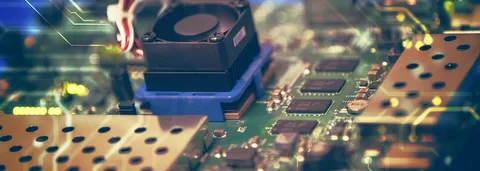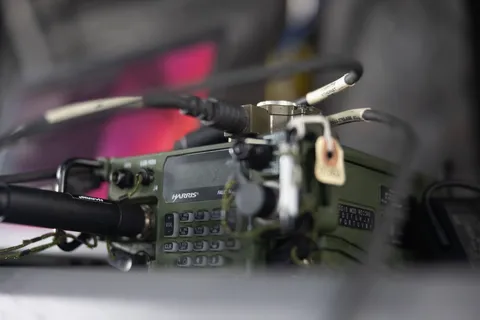Our Research
Edge Computing
Edge computing pushes applications, data, and computing power from central computing locations like servers to the edge of the Internet—to mobile devices, sensors, and end users that are distributed all over the world.
In traditional computing, processing is performed mainly in centralized locations like local servers and in the cloud. If you need a certain service, like image analysis, a camera might send information about images to the cloud to analyze them. However, with edge computing, processing happens close to the source of the data, like in your cell phone or in a device that’s collecting information. Moving computing to the edge has many benefits: faster response times, data privacy and security, and resiliency if the cloud becomes unavailable.
Enabling operations at the edge is important to a growing number of systems. For example, in environments known as the humanitarian edge—where first responders and other emergency personnel work—edge computing can provide faster updates about weather events, seismic events, or infrastructure failures, where conditions can change at a moment’s notice. Similarly, on the tactical edge—where military personnel execute missions in areas that range from air, to sea, to ground—edge computing can improve intelligence, surveillance, and reconnaissance.
But these environments create new software and engineering challenges, especially as more powerful computing is needed to run artificial intelligence (AI) capabilities for the state-of-the-art analysis that humanitarian and tactical personnel need. Devices used by personnel at the humanitarian and tactical edge are often limited in their computational power, and these edge environments lack connections to networks that could support their functionality. To make matters worse, devices on the tactical edge are often the target of cyber attacks by enemy actors.
To support personnel at the humanitarian and tactical edge, we need to make these devices resilient to attacks, and we need to find a way to support them by improving their connectivity to the cloud in a secure, reliable, and timely way. Figuring out these challenges can transform how we conduct everything from military operations to field research, field medicine, transportation, and environmental analysis.
The deployment of IoT devices to support missions, from the enterprise to the tactical edge, is also pushing the cloud-to-edge continuum. The SEI researches how to automate this process—from build in the cloud to secure deployment at the edge.
SEI PRINCIPAL RESEARCHER
Serving the Humanitarian and Tactical Edge
The SEI is conducting applied research to create and transition innovative solutions, principles, and best practices for architecting and developing systems that support teams at the humanitarian and tactical edge. The SEI explores how to engineer systems to support edge computing in places where connectivity is limited and on devices that—due to size, weight, and power (SWAP) limitations—have limited computing resources, such as CPU or GPU power and memory.
To make state-of-the-art analyses available to these resource-limited devices, the SEI explores how to design systems for distributability. Distributed systems split computations or analyses into smaller tasks, which are then completed in different places—or nodes. This solution speeds up processing and reduces the computational load on any single device running a subtask of the larger computation or analysis.
Distributability, however, requires communication between these different nodes, which means they need some way to connect to each other. Most devices only work as intended when the connections between them are uninterrupted, which is often not possible at the humanitarian and tactical edge. To support distributability in these special environments, the SEI investigates approaches for engineering software systems to create nodes that can handle intermittent connectivity. In addition, the nodes must be robust enough to work even when communications are actively denied because of attacks by adversaries or because of natural disasters.
The SEI also studies how to reduce the size of the data that edge devices must process, and we’re creating optimization techniques that bring AI and machine learning (ML) capabilities to the resource-limited edge devices that personnel carry in the field. Often, AI and ML capabilities require sophisticated hardware that is unavailable on edge devices, putting advanced analyses out of reach. The SEI’s solutions, however, will place these state-of-the-art capabilities in the hands of humanitarian and tactical personnel to drive the success of their missions.
Related Topics
Related Job Openings
Associate Real-Time Embedded Software Engineer
Locations
Pittsburgh, PA
Associate Real-Time Embedded Software Engineer
Locations
Pittsburgh, PA
Real-Time Embedded Software Engineer
Locations
Pittsburgh, PA








